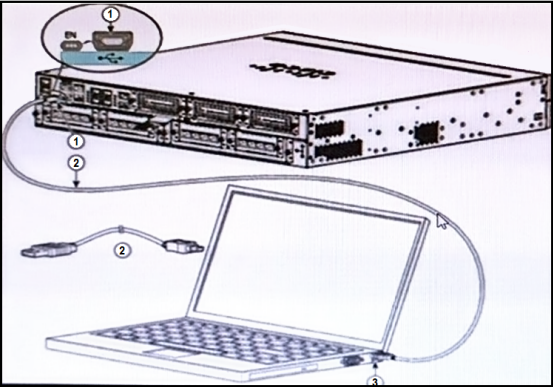Supporting Cisco Routing & Switching Network Devices Demo Questions
Here you can find Supporting Cisco Routing & Switching Network Devices exam sample questions which will help you to prepare for your upcoming certification test. These questions will give you an idea of what to expect on the exam and help you review the 100-490 RSTECH study material. Be sure to go over the Free 100-490 RSTECH questions multiple times so that you are confident and comfortable with the material. You can always go to the full 100-490 RSTECH dumps here.
These Supporting Cisco Routing & Switching Network Devices certification questions are designed to give you a feel for the material you'll be tested on. They cover a wide range of topics, so you can get a sense of what to expect on examination day.
These 100-490 RSTECH dumps are updated regularly, so you can be confident that you're studying with the most up-to-date information available. We also provide answer keys so that students can check their work.
Additionally, going through Supporting Cisco Routing & Switching Network Devices practice questions can help you identify any areas where you need more review. Taking advantage of our 100-490 RSTECH demo questions is a great way to set yourself up for success on the real thing.
These Supporting Cisco Routing & Switching Network Devices questions cover the material that will be on the test, and provide an opportunity for students to practice their skills. The questions are designed to be similar to those that will be on the actual Supporting Cisco Routing & Switching Network Devices exam, so that students can get a feel for what they will be facing. We believe that by providing these demo questions, students will be better prepared and more likely to succeed on their exams.
Good luck for the 100-490 RSTECH exam!
Supporting Cisco Routing & Switching Network Devices Sample Questions:
1. What are two components of a WAN connection? (Choose two.)
A. CSU/DSU
B. router
C. bridge
D. hub
E. switch
2. Which address facilitates the routing of packets over an IP network?
A. physical
B. transport
C. network
D. MAC
3. Which two statements about Telnet and SSH are true? (Choose two.)
A. SSH is a protocol that provides a secure remote access connection to network devices.
B. SSH uses the well-known TCP port 23 for its communication.
C. A Telnet network management connection is dropped when a router reboots.
D. Telnet is a protocol that provides a secure remote access connection to network devices.
E. Telnet is preferred over SSH for security reasons.
4. Which device is a DTE device?
A. CSU/DSU
B. router
C. cable modem
D. DSL modem
5. What is the correct IPv6 address notation?
A. 2001:0DB8::/128
B. 2001:0DB8:0::
C. 2001:0DB8::1:1:1:1:1
D. 2001:0DB8:130F:0000:0000:7000:0000:140B
6. Which protocol does TFTP typically use for transport?
A. RSVP
B. TCP
C. HTTP
D. UDP
7. Which two IPv4 addresses can be assigned to a host computer? (Choose two.)
A. 255.255.255.255
B. 10.1.1.20
C. 0.0.0.0
D. 192.168.10.15
E. 292.10.3.4
8. Which layer of the OSI model defines how data is formatted for transmission and how access to the physical media is controlled?
A. presentation
B. data link
C. network
D. transport
9. Refer to the exhibit.

Which two statements about the hardware components are true? (Choose two.)
A. 2 is an RJ-45 to USB Type A console cable.
B. 3 is a USB Type A port.
C. 3 is a USB 5-pin mini USB Type B port.
D. 1 is a USB Type A port.
E. 2 is a USB 5-pin mini USB Type B to USB Type A console cable.
10. The colored wires at one end of a cable are in reverse sequence to the colored wires at the other end of the cable. Which cable does this configuration describe?
A. rolled
B. crossover
C. coaxial
D. straight-through